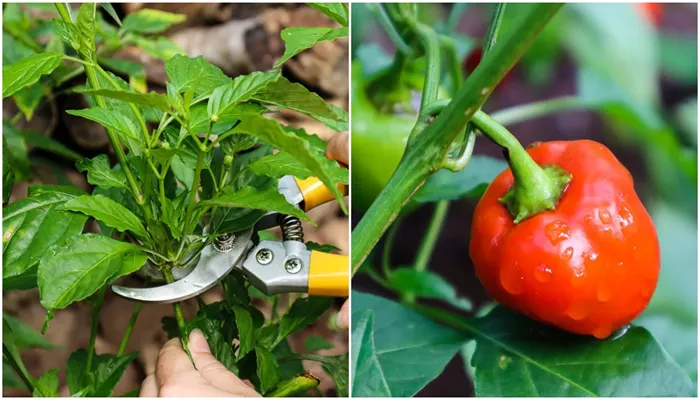Whiteflies are tiny, sap-sucking insects that can quickly become a gardener’s nightmare. These small, white-winged pests swarm around plants when disturbed and cause significant damage if left unchecked. But what exactly leads to whitefly infestations? This article explores the main causes behind whitefly problems and how to prevent them effectively.
What Are Whiteflies?
Identifying Whiteflies
Whiteflies are not true flies but are related to aphids and mealybugs. Key characteristics include:
- Tiny, moth-like appearance (1-2mm long)
- White, powdery wings
- Yellowish bodies
- Cluster on leaf undersides
- Fly up in clouds when disturbed
Common Whitefly Species
The most problematic species include:
- Greenhouse whitefly (Trialeurodes vaporariorum)
- Silverleaf whitefly (Bemisia tabaci)
- Giant whitefly (Aleurodicus dugesii)
Primary Causes of Whitefly Infestations
1. Introducing Infested Plants
The most common entry point:
- Newly purchased plants
- Contaminated soil
- Plant gifts or cuttings
- Nursery stock with hidden eggs
Critical fact: A single infected plant can start a major infestation in weeks.
2. Warm, Sheltered Environments
Whiteflies thrive in:
- Temperatures between 70-90°F (21-32°C)
- Low-wind conditions
- High humidity areas
- Protected spaces (greenhouses, indoors)
This explains their prevalence in:
- Indoor plant collections
- Greenhouse crops
- Sheltered garden areas
3. Overfertilization (Especially Nitrogen)
Excess nitrogen leads to:
- Tender new growth that’s easier to penetrate
- Higher amino acid content in sap
- Reduced plant defense compounds
4. Lack of Natural Predators
Whitefly populations explode when:
- Ladybugs and lacewings are absent
- Parasitic wasps aren’t present
- Birds can’t access the plants
- No natural controls exist (common indoors)
5. Continuous Plant Availability
Whiteflies persist when:
- Host plants are available year-round
- No crop rotation occurs
- Alternative weeds host them between seasons
- Indoor plants never get a pest-free break
6. Ant Interactions
Ants protect whiteflies because:
- They harvest honeydew secretions
- They defend whiteflies from predators
- They move nymphs to new plants
How Whiteflies Damage Plants
Feeding Damage
Whiteflies harm plants by:
- Piercing plant tissue with needle-like mouthparts
- Sucking phloem sap
- Injecting toxic saliva
- Causing nutrient depletion
Secondary Problems
Infestations lead to:
- Sticky honeydew coating leaves
- Black sooty mold growth
- Virus transmission (over 100 plant viruses)
- Reduced photosynthesis
Whitefly Life Cycle
Understanding their reproduction helps control them:
Egg Stage
- Laid in circular patterns on leaf undersides
- 200-400 eggs per female
- Hatch in 5-10 days
Nymph Stages
- Crawlers move briefly then settle
- Three molts while feeding
- Develop into pupae in 2-4 weeks
Adult Stage
- Emerge ready to reproduce
- Live 1-2 months
- Multiple generations per year
- Can reproduce without mating
High-Risk Plants
Whiteflies prefer certain plant groups:
Most Vulnerable Plants
- Tomatoes
- Citrus trees
- Poinsettias
- Cucumbers
- Hibiscus
- Sweet potatoes
- Cabbage family
- Many houseplants
Less Common Hosts
- Herbs
- Grasses
- Some flowering annuals
Prevention Strategies
Cultural Controls
- Quarantine new plants – Isolate for 3-4 weeks
- Remove weeds – Eliminate alternate hosts
- Space plants properly – Improve air circulation
- Use reflective mulches – Deter whitefly landings
- Time plantings – Avoid peak whitefly seasons
Environmental Modifications
- Install fans to disrupt flight
- Use shade cloth in hot climates
- Maintain moderate humidity
- Avoid overfertilizing
Biological Controls
Effective natural enemies:
- Encarsia formosa (parasitic wasp)
- Delphastus beetles
- Green lacewings
- Lady beetle larvae
Treatment Options
Early Intervention Methods
- Yellow sticky traps – Monitor and catch adults
- Vacuuming – Remove adults with handheld vacuum
- Water sprays – Dislodge nymphs and eggs
- Insecticidal soap – Effective on contact
- Neem oil – Disrupts life cycle
Advanced Treatments
- Systemic insecticides (for severe cases)
- Botanical insecticides (pyrethrins)
- Horticultural oils (smother eggs)
- Always rotate treatments to prevent resistance
Common Mistakes That Worsen Infestations
What to Avoid
- Delaying treatment
- Only treating adults (missing eggs/nymphs)
- Overusing broad-spectrum insecticides
- Ignoring nearby weeds
- Not treating all plants simultaneously
Long-Term Management Plan
Monitoring Protocol
- Weekly leaf underside inspections
- Yellow sticky trap counts
- Magnifying glass for eggs
- Record-keeping of hotspots
Seasonal Strategies
- Spring: Early detection
- Summer: Intensive controls
- Fall: Cleanup to prevent overwintering
- Winter: Greenhouse protections
Conclusion
Whitefly infestations typically begin with introduced pests finding ideal environmental conditions and vulnerable plants. By understanding these causes and implementing preventive measures like quarantine, biological controls, and proper plant care, you can effectively manage whitefly problems. Remember that persistence and early action are key – whiteflies reproduce rapidly, so consistent monitoring and treatment provide the best results.
Final Tip: Encourage biodiversity in your garden to support natural whitefly predators and create a balanced ecosystem that keeps pest populations in check.


